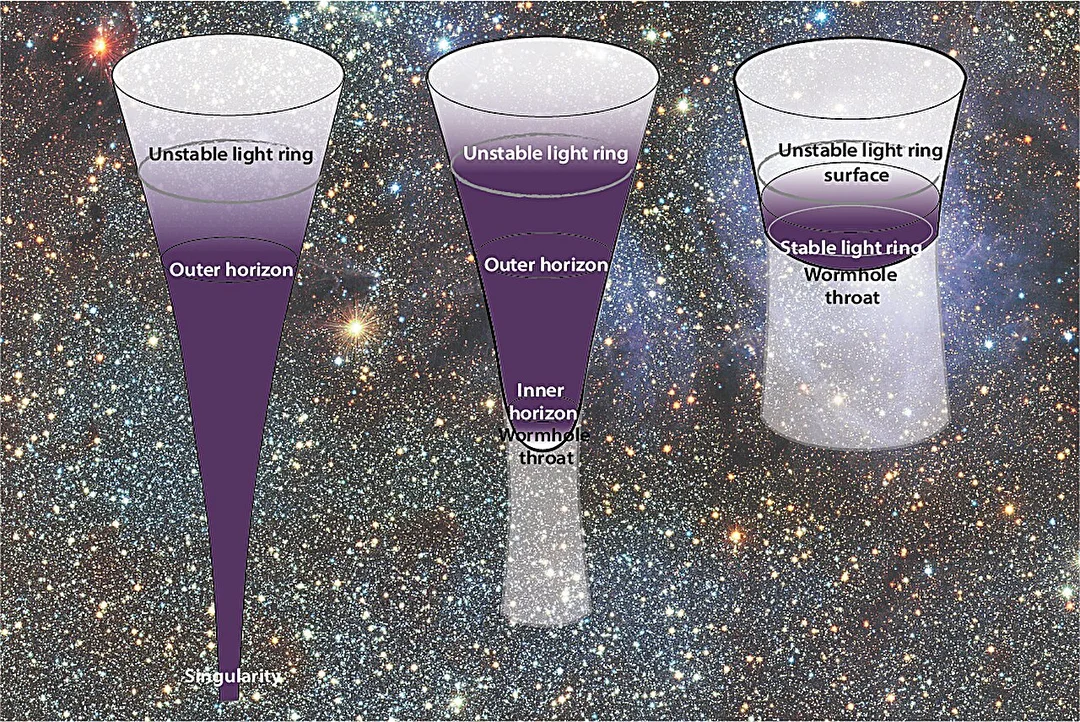
Black Holes: Challenging Einstein’s Theory with New Models and Quantum Physics
Are we wrong about black holes? New research suggests that the singularities at the center of black holes, where physics as we know it breaks down, may not exist at all. This radical theory challenges Einstein's long-accepted theory of General Relativity and opens up a new frontier in quantum gravity research.
Scientists are now exploring alternative models, including those without event horizons, that could revolutionize our understanding of these enigmatic cosmic objects. With next-generation observations on the horizon, we might finally be able to glimpse what truly lies beyond the event horizon.

Einstein, Schwarzschild, and the Birth of Black Holes: As Stefano Liberati, director of the Institute for Fundamental Physics of the Universe (IFPU), puts it, venturing into the singularity of a black hole is akin to entering uncharted territory – "hic sunt leones" (here be lions). This singularity, predicted by Einstein's general relativity, signifies a point where spacetime becomes infinitely curved, and the laws of physics simply cease to apply.
The Singularity Problem in Physics: Since the 1970s, evidence for black holes has steadily accumulated, with major breakthroughs like the detection of gravitational waves in 2015 and the Event Horizon Telescope's images of black holes in 2019 and 2022. Yet, none of these observations could confirm or deny the existence of singularities. The true nature of a black hole's core remains a profound mystery.
Beyond the Event Horizon: Searching for Answers: Researchers have long sought a new paradigm where quantum effects "heal" the singularity. This quest has led to the exploration of models without singularities, such as those investigated by Liberati and his collaborators. The discussion during an IFPU workshop identified three main black hole models: the standard black hole with a singularity and event horizon, the regular black hole without a singularity but retaining the horizon, and the black hole mimicker, replicating external features without either a singularity or event horizon.
Rethinking Black Holes: The models explore how these alternative black holes might form and potentially transform into one another. Crucially, they address how observational tests could distinguish them from standard black holes.
According to the study led by the Institute for Fundamental Physics of the Universe (IFPU) in Trieste reviews the state of the art, Researchers describe two alternative models, propose observational tests, and explore how this line of research could also contribute to the development of a theory of quantum gravity.
The Role of Advanced Instruments and Experiments: To probe these subtle differences, scientists need to measure deviations from Einstein's theory using sophisticated instruments and diverse observational channels. For instance, high-resolution imaging by the Event Horizon Telescope could reveal unique features in the light bent around black hole mimickers, such as more complex photon rings. Furthermore, gravitational waves might unveil anomalies indicative of non-classical spacetime geometries.
Toward a Quantum Theory of Gravity: The research could lead to the development of a quantum theory of gravity, bridging general relativity and quantum mechanics. As Liberati concludes, we are entering a truly exciting time in gravity research as we explore this vast and previously unknown landscape.
This work highlights a pivotal moment in our understanding of black holes. Will these models lead to a revolutionary shift in our perception of the cosmos? What new insights will future observations reveal? Share your thoughts and predictions in the comments below.